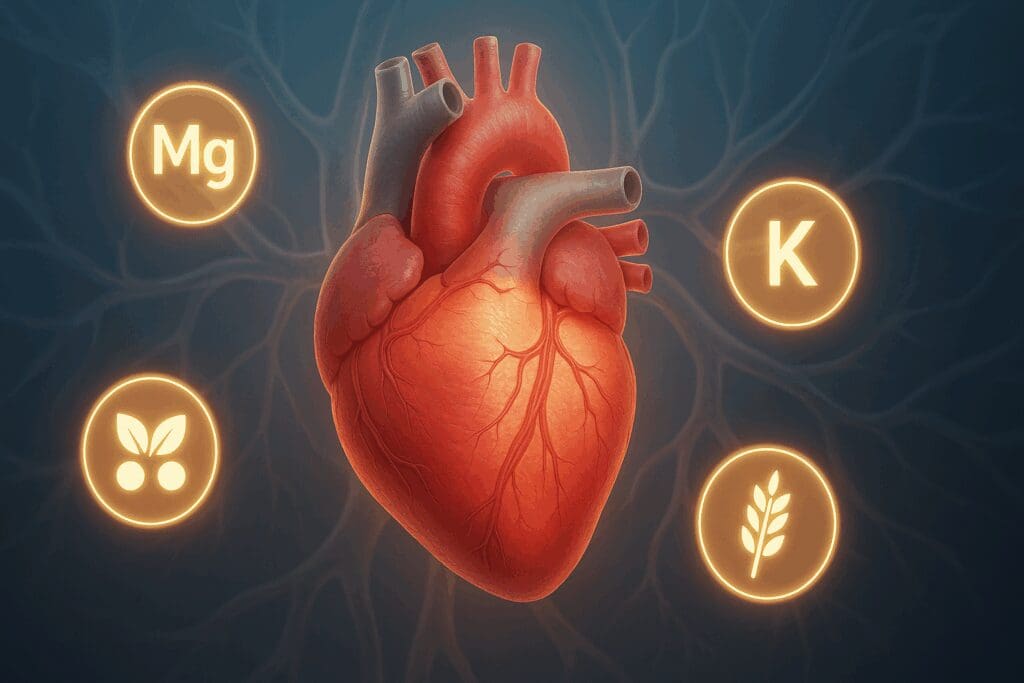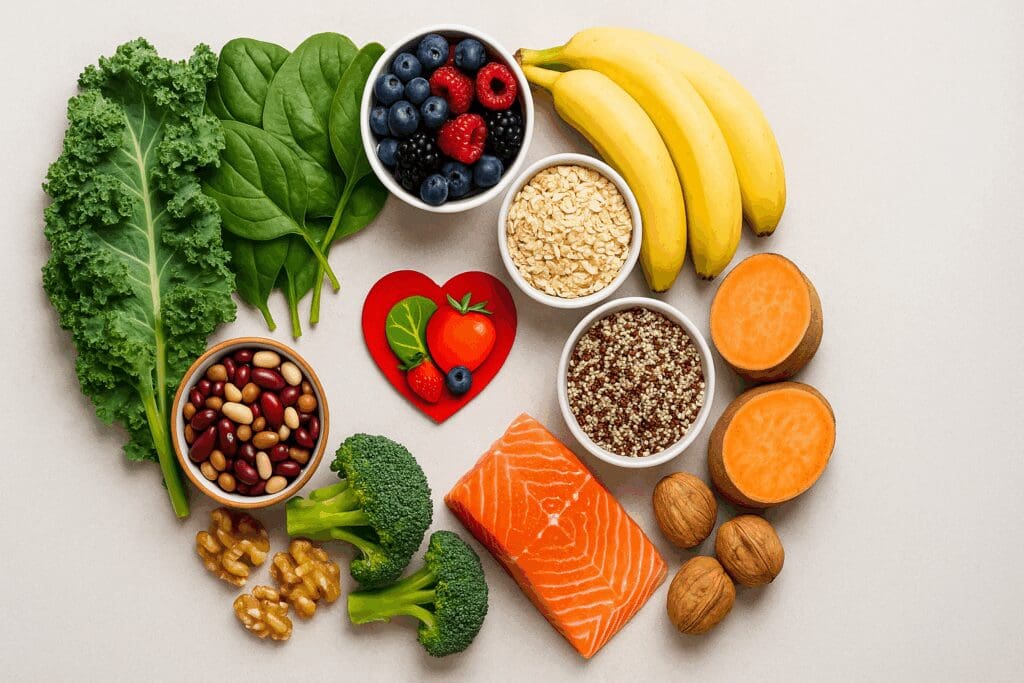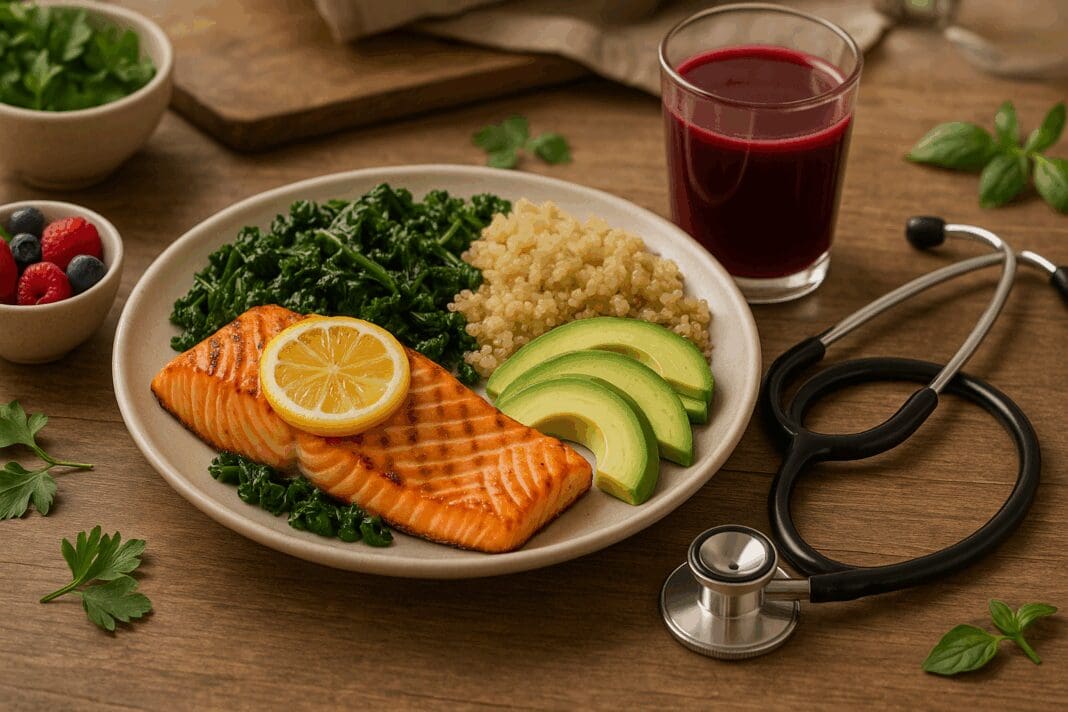Heart failure is a complex and chronic condition that requires more than medication to manage effectively. Nutrition plays a vital role in shaping patient outcomes, and for many individuals, adopting a dedicated heart failure diet can significantly improve quality of life, reduce hospitalizations, and enhance overall cardiovascular function. By carefully adjusting one’s eating habits, patients can support heart health, reduce fluid retention, and prevent the worsening of symptoms such as shortness of breath, fatigue, and swelling. The integration of nutrient-dense, low-sodium, heart-supportive foods is not a supplementary measure—it is foundational to long-term cardiac care. As we explore the science behind heart-healthy eating, this guide offers expert insights and a practical, comprehensive approach to building a diet tailored to the unique needs of individuals living with heart failure.
You may also like: 10 Essential Tips on Choosing Healthy Food for Ladies to Boost Energy and Wellness

Why Nutrition Matters in Heart Failure Management
Understanding the relationship between food and heart health begins with recognizing that the heart is an energy-demanding organ, reliant on nutrients, hydration, and electrolyte balance to function efficiently. In heart failure, the heart’s ability to pump blood is diminished, which disrupts the distribution of oxygen and nutrients to tissues throughout the body. A tailored heart failure diet addresses these metabolic challenges by ensuring that every calorie supports rather than burdens the cardiovascular system. Low-sodium intake helps control fluid balance, preventing fluid overload that can strain the heart and lungs. Adequate potassium and magnesium intake stabilizes heart rhythm and supports vascular tone, which is critical in minimizing arrhythmias and hypertension.
Moreover, dietary habits can directly influence inflammation, oxidative stress, and endothelial function—all of which are key contributors to the progression of heart disease. Diets rich in antioxidants and anti-inflammatory nutrients have been shown to modulate these processes, offering therapeutic benefits beyond pharmacological interventions. Emerging research even suggests that certain phytonutrients found in heart healthy foods may activate signaling pathways that repair myocardial tissue and improve endothelial flexibility. Thus, nutrition is not simply supportive care—it is a proactive strategy for mitigating disease progression.

Core Principles of a Heart Failure Diet
Adopting a heart failure diet involves more than just cutting out salt. It is a comprehensive approach to nourishment that emphasizes nutrient density, fluid control, and metabolic balance. One of the central tenets of this diet is sodium restriction, typically limited to 1,500–2,000 mg per day, depending on the individual’s stage of heart failure. This helps prevent water retention and edema, thereby reducing the workload on the heart. Monitoring fluid intake is also crucial, particularly for patients with advanced symptoms, as excess fluids can exacerbate pulmonary congestion.
Beyond sodium and fluids, the heart failure diet prioritizes foods rich in potassium, such as leafy greens, bananas, and sweet potatoes, which help balance the effects of sodium and support electrical signaling in heart muscles. Magnesium and calcium, both critical for cardiac contractility, are obtained through nuts, seeds, legumes, and dairy alternatives. Adequate fiber intake supports weight management, cholesterol regulation, and blood sugar stability—all essential components of cardiac health.
Additionally, this diet minimizes intake of saturated fats, trans fats, and added sugars, all of which contribute to endothelial dysfunction and atherogenesis. Replacing these with heart healthy fats, such as omega-3 fatty acids from fatty fish or flaxseeds, supports anti-inflammatory pathways and reduces triglyceride levels. This integrative approach ensures that every aspect of diet works synergistically to relieve cardiovascular strain and improve outcomes.

Best Foods for Heart Health: Building a Heart-Supportive Plate
The most effective diet for heart disease is one that consistently includes a variety of foods that nourish the cardiovascular system while minimizing metabolic burden. Whole plant foods form the foundation of this dietary pattern, beginning with vegetables that provide fiber, potassium, and phytonutrients. Leafy greens like spinach, kale, and arugula are particularly beneficial due to their nitrate content, which helps relax blood vessels and reduce blood pressure. Colorful vegetables such as bell peppers, beets, and carrots supply antioxidants that neutralize free radicals and protect the vascular endothelium.
Fruits are another indispensable part of the heart failure diet. Berries, particularly blueberries, strawberries, and raspberries, offer anthocyanins that reduce oxidative stress and inflammation. Apples and pears provide soluble fiber, which binds to cholesterol and aids in its elimination from the body. Bananas and oranges, rich in potassium, help regulate fluid balance and maintain optimal blood pressure.
Whole grains like quinoa, barley, oats, and brown rice are excellent carbohydrate sources that maintain glycemic stability without overwhelming the system. Unlike refined grains, these options retain their bran and germ layers, offering sustained energy, B vitamins, and additional fiber. Legumes—including lentils, black beans, and chickpeas—offer plant-based protein and are uniquely supportive of heart health due to their cholesterol-lowering effects and ability to support gut health.

Frequently Asked Questions About Creating a Sustainable Heart Failure Diet
1. What are the most overlooked elements of a successful heart failure diet?
One of the most overlooked aspects of a heart failure diet is the importance of consistency over intensity. Many patients focus heavily on eliminating every bad food for heart health but often ignore the need to sustain those changes long term. Instead of extreme dietary restrictions, it’s more effective to gradually transition to a heart friendly diet that incorporates foods good for heart health on a daily basis. This could mean simple swaps—like using avocado in place of butter or whole grains instead of refined flours. Importantly, attention should also be paid to meal timing and stress-reducing mealtime rituals, which can directly influence cardiovascular load.
2. How can someone balance taste and compliance on a heart healthy diet plan?
Flavor fatigue is a common barrier in maintaining a heart healthy diet. To counter this, culinary herbs and spices such as turmeric, basil, rosemary, and garlic can be used to enhance flavor without adding salt. These ingredients not only improve taste but also contribute to the anti-inflammatory properties that support a heart health diet. Incorporating a diverse range of global cuisines—like Mediterranean, Japanese, or Indian—can add variety while still emphasizing heart healthy foods. Using naturally sweet fruits good for the heart, such as berries or citrus, in savory dishes is another way to innovate without compromising health goals.
3. What does a long-term heart diet plan look like for someone recovering from a cardiac event?
Recovery from a heart attack requires more than short-term changes—it demands a structured heart attack diet that evolves into a sustainable lifestyle. Initially, a strict cardiac diet plan may involve low sodium, fluid monitoring, and high potassium foods for heart health. Over time, this should transition into a more flexible heart healthy eating plan that prioritizes balance, nutrient density, and enjoyment. Key to this shift is personalizing the diet for heart disease based on lab results, medication interactions, and personal preferences. This progression prevents relapse into old habits while reducing the psychological burden of permanent restriction.
4. What are some emerging scientific findings that influence how we think about heart healthy foods?
Recent studies are revealing that gut health and cardiovascular health are more closely linked than previously understood. Fermented foods for the heart, such as kefir and kimchi, are now being explored for their role in reducing inflammation and improving blood pressure. The role of polyphenols—found in foods like dark chocolate, berries, and green tea—has expanded the heart healthy foods list beyond traditional staples. Additionally, time-restricted eating is being studied as a potential way to support the body’s natural rhythm and reduce cardiovascular strain. As research deepens, the definition of foods best for heart health is becoming more personalized and microbiome-aware.
5. How do emotional and social factors affect adherence to a heart healthy eating plan?
Social isolation and emotional stress are two underestimated barriers to maintaining a heart failure diet. Many people associate food with comfort or cultural identity, making dietary restrictions feel emotionally isolating. Building a support network that shares in a healthy heart diet chart—whether it’s through family, group meal prep, or online communities—can drastically improve adherence. Emotional resilience also increases when meals are seen as acts of self-care rather than punishment. The key is shifting the mindset from “restricting bad food for heart” to “nourishing the body with food good for heart.”
6. Why should heart healthy fruits and vegetables be prioritized differently depending on age?
As people age, the body’s ability to absorb nutrients and manage oxidative stress changes, which affects how the heart responds to certain foods. For older adults, heart healthy fruits like pomegranate and blueberries provide high levels of antioxidants to combat age-related inflammation. In younger individuals, fiber-rich vegetables and omega-3 sources like flax or chia seeds might offer more metabolic support. A personalized cardio diet will account for not just cardiovascular risk but also life stage. Additionally, textures and preparation methods should be adjusted to meet changing dental or digestive needs without compromising on the nutritional goals of the heart health diet.
7. How does cultural background influence the practicality of following a cardiac diet?
Many cardiac diet plans fail because they don’t take cultural food norms into account. For example, in South Asian cultures, traditional meals can be rich in ghee, fried foods, and refined carbs. However, with thoughtful substitutions—like using mustard oil in moderation or steaming instead of frying—one can align traditional recipes with a heart friendly diet. Including culturally relevant heart healthy foods makes it more likely that individuals will stick to the plan long term. Understanding how to preserve culinary identity while enhancing cardiovascular health is key to making a heart diet inclusive and sustainable.
8. What tools or technologies can help monitor progress on a heart healthy diet?
Technology is becoming increasingly useful in supporting a heart failure diet. Apps like MyFitnessPal or Cronometer allow tracking of sodium, potassium, and saturated fats—key markers in any heart diet plan. Continuous glucose monitors and wearable heart rate trackers can help evaluate how foods for heart health influence overall cardiovascular function in real time. Some smart kitchen devices even suggest heart healthy recipes based on available ingredients. By using data to adjust a heart healthy diet plan, individuals can develop a more informed, adaptive approach to eating heart healthy without feeling restricted.
9. What role do beverages play in the success of a diet for heart disease?
People often focus on food for the heart while overlooking the impact of beverages. Sugary drinks, excess caffeine, and alcohol are all considered bad food for heart health due to their role in raising blood pressure and contributing to inflammation. On the other hand, drinks like hibiscus tea, beet juice, and green tea offer compounds that support a heart healthy diet. Hydration also plays a critical role in blood volume regulation and heart workload. For those following a heart healthy eating plan, choosing beverages with nutritional value is just as important as selecting the right solid foods.
10. How can someone future-proof their eating habits with a heart failure diet?
A future-focused heart failure diet means thinking beyond today’s restrictions and building a framework for lifelong cardiovascular wellness. This includes periodically reassessing the heart healthy foods list as personal needs evolve due to medication, aging, or lab changes. It also involves staying updated on innovations in functional food science, such as plant sterols or algae-based omega-3s. Long-term success lies in understanding that a heart healthy diet isn’t a fixed prescription but a dynamic relationship with food. By continuously adapting your heart healthy diet plan, you not only protect against relapse but also enhance your overall quality of life.

Conclusion: Embracing the Heart Failure Diet for Lifelong Cardiac Health
Managing heart failure requires a multifaceted strategy—one that integrates medical treatment, lifestyle modification, and most critically, nutrition. The heart failure diet is more than a set of restrictions; it is a blueprint for healing and resilience. When applied consistently, it becomes a powerful tool for stabilizing symptoms, minimizing fluid overload, and improving the function and longevity of the heart. Through purposeful dietary choices that emphasize low sodium, high fiber, and nutrient-dense foods, individuals with heart failure can take control of their health trajectory in ways that are both practical and empowering.
This approach fosters a deeper understanding of the connection between what we eat and how our hearts perform, not just in the short term, but across a lifetime. By focusing on foods good for heart health—such as fruits good for the heart, leafy greens, legumes, whole grains, and healthy fats—we nourish the heart at a cellular level. At the same time, eliminating bad food for the heart, like those high in sodium, added sugars, and trans fats, prevents unnecessary strain on a compromised cardiovascular system. The best diet for heart health is one that is rich in variety, steeped in moderation, and rooted in science—a diet that evolves with the individual and meets their needs at every stage of care.
Importantly, a sustainable heart healthy eating plan must also take into account the emotional and psychological aspects of food. Joyful eating, cultural traditions, and shared meals should not be lost in the process. With the right planning and mindset, even the heart failure diet can be deeply satisfying, offering not only protection and strength for the heart but also fulfillment for the soul.
By committing to a heart friendly diet and applying the principles of a thoughtful heart diet plan, individuals can reframe the journey of heart failure from one of limitation to one of opportunity. With each meal and every bite, they take a meaningful step toward better energy, fewer hospitalizations, and a fuller, longer life supported by the nourishing power of food. In this way, the best foods for heart health become not just medicine—but hope, vitality, and the foundation for a thriving future.



